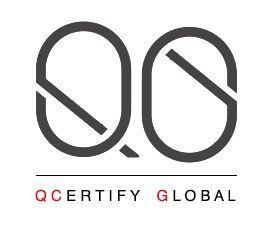Top 5 Cybersecurity Frameworks Every Business Should Implement in 2025
In today’s digital landscape, cyber threats are evolving at an unprecedented pace. To safeguard sensitive data, prevent cyberattacks, and maintain regulatory compliance, businesses must implement robust cybersecurity frameworks. With 2025 on the horizon, organizations need to stay ahead of emerging threats by adopting industry-leading security standards.
In this blog, we will explore the top five cybersecurity frameworks that businesses should implement to enhance security posture and regulatory compliance.
1. ISO 27001: The Gold Standard for Information Security
ISO 27001 is the international standard for Information Security Management Systems (ISMS). It provides a structured approach to managing risks, protecting sensitive information, and ensuring business continuity.
Why Implement ISO 27001?
- Establishes a risk-based approach to information security.
- Ensures compliance with global security regulations (GDPR, HIPAA, etc.).
- Enhances customer trust by demonstrating security commitment.
- Reduces the risk of data breaches and cyber threats.
Best for: Enterprises handling sensitive customer data, IT service providers, financial institutions, and healthcare organizations.
2. NIST Cybersecurity Framework: A Flexible Security Roadmap
The NIST Cybersecurity Framework (CSF), developed by the National Institute of Standards and Technology, is a widely adopted security framework, especially in the United States. It provides a structured approach to managing cybersecurity risks using five core functions:
- Identify – Recognize and assess risks.
- Protect – Implement security controls.
- Detect – Monitor and identify threats.
- Respond – Develop an incident response plan.
- Recover – Ensure business continuity after cyber incidents.
Why Implement NIST CSF?
- Provides a scalable and flexible approach for businesses of all sizes.
- Enhances risk management and incident response.
- Aligns with other standards like ISO 27001 and PCI DSS.
Best for: Businesses in critical infrastructure, finance, healthcare, and organizations looking for a flexible cybersecurity framework.
3. PCI DSS: Ensuring Payment Card Security
If your business processes, stores, or transmits payment card data, compliance with the Payment Card Industry Data Security Standard (PCI DSS) is mandatory.
Key PCI DSS Requirements:
- Secure network and system configurations.
- Implement strong access controls and encryption.
- Conduct regular vulnerability testing and audits.
- Maintain continuous monitoring and logging.
Why Implement PCI DSS?
- Prevents credit card fraud and data breaches.
- Avoids hefty fines and penalties for non-compliance.
- Enhances customer confidence in secure transactions.
Best for: E-commerce businesses, banks, payment service providers, and retail organizations.
4. CIS Controls: A Practical Approach to Cyber Defense
The Center for Internet Security (CIS) Controls is a set of best practices for cyber defense, designed to protect organizations from cyber threats efficiently.
Key CIS Controls:
1. Inventory and Control of Assets – Manage hardware and software security.
2. Continuous Vulnerability Management – Identify and fix security weaknesses.
3. Secure Configurations – Harden system settings to reduce attack surfaces.
4. Email and Web Browser Protection – Prevent phishing and malware attacks.
5. Access Control Management – Restrict unauthorized access.
Why Implement CIS Controls?
- Provides clear, actionable steps for cybersecurity improvement.
- Helps businesses quickly mitigate cyber threats.
- Aligns with other security frameworks like ISO 27001 and NIST.
Best for: Small and medium-sized businesses (SMBs), startups, and organizations looking for cost-effective security solutions.
5. SOC 2: Security Compliance for Cloud-Based Businesses
Service Organization Control 2 (SOC 2) is a cybersecurity framework designed for businesses that provide cloud based services. It ensures that companies handle customer data securely based on five key Trust Service Criteria (TSC):
- Security – Protecting systems from unauthorized access.
- Availability – Ensuring system uptime and performance.
- Processing Integrity – Guaranteeing accurate data processing.
- Confidentiality – Protecting sensitive business information.
- Privacy – Handling personal data securely.
Why Implement SOC 2?
- Demonstrates strong security controls to clients and stakeholders.
- Required for SaaS providers, cloud-based businesses, and tech companies.
- Enhances trust and credibility in B2B transactions.
Best for: Technology companies, SaaS providers, and cloud service providers.
Final Thoughts: Choosing the Right Cybersecurity Framework
Each cybersecurity framework serves a different purpose, and businesses should adopt one or more frameworks based on their industry, compliance requirements, and security needs.
Cybersecurity Framework Best for
- ISO 27001: Data security & risk management
- NIST CSF: Flexible cybersecurity strategy
- PCI DSS: Payment security & fraud prevention
- CIS Controls: SMBs & cost-effective security
- SOC 2: Cloud-based businesses & SaaS providers
At QCertify Global, we specialize in ISO certification, GRC consultation, and cybersecurity compliance. Our experts can help your business implement the right security framework to protect your data, maintain compliance, and stay ahead of cyber threats.
Contact us today to get started on your cybersecurity journey!



